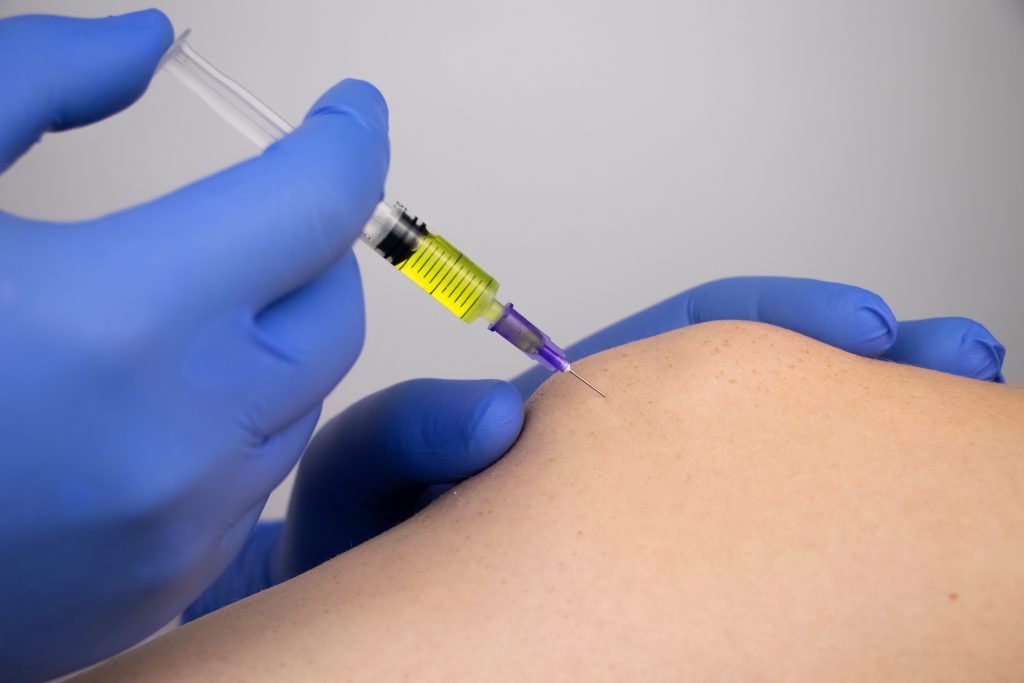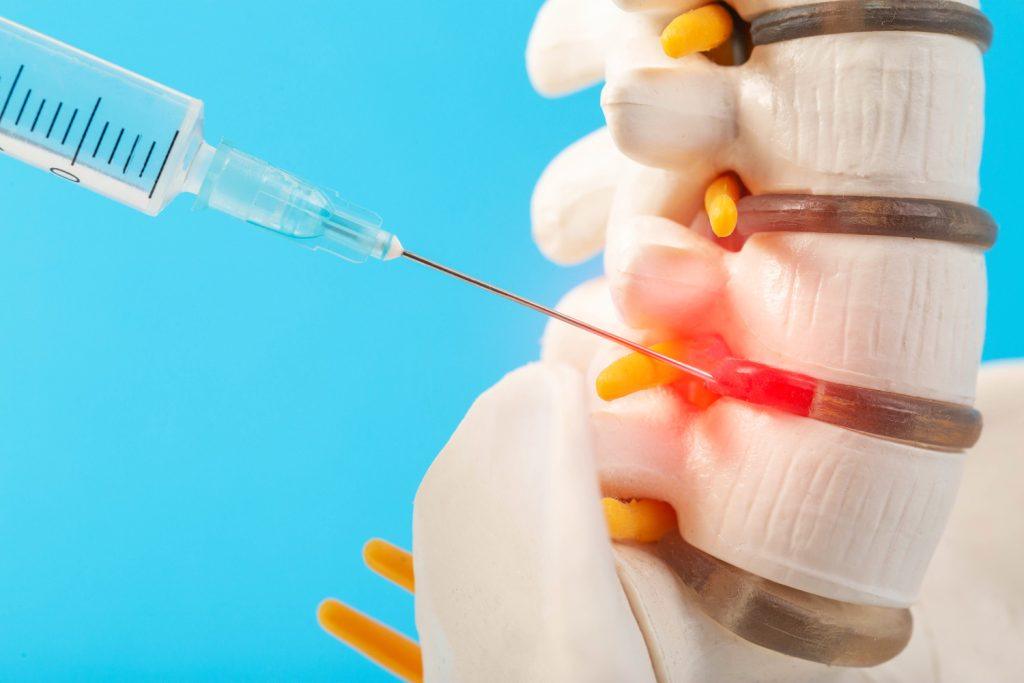How Corticosteroid Injections Can Provide Immediate Relief for Arthritis

Corticosteroid injections can effectively treat arthritis, providing immediate pain relief and reducing inflammation. These injections benefit various types of arthritis, including osteoarthritis, rheumatoid arthritis, and psoriatic arthritis. However, it’s essential to be aware of potential side effects and the recommended frequency for receiving them.
What Are Corticosteroid Injections?
Corticosteroid injections, or cortisone shots, are administered directly into joints to provide rapid pain relief and reduce inflammation, often with a local anesthetic. These injections, given by doctors, rheumatologists, or orthopedic specialists, contain synthetic corticosteroid hormones that mimic cortisol’s effects on the body. They treat conditions like inflammatory arthritis, bursitis, and tendinitis. Corticosteroid injections help alleviate pain and swelling by targeting the affected area, improving patients’ mobility and function.
How Do Corticosteroid Injections Work?
Corticosteroid injections mimic adrenal gland hormones to suppress the immune system and reduce joint inflammation. When administered, they deliver a concentrated dose directly to the site of discomfort, targeting specific areas of inflammation. This approach helps alleviate swelling, pain, and stiffness in rheumatoid arthritis and sciatica. By focusing on the affected area, corticosteroid injections minimize the systemic impact and potential side effects compared to oral corticosteroids.
What Are The Benefits Of Corticosteroid Injections For Arthritis?
Corticosteroid injections offer several benefits for managing arthritis symptoms, including rapid pain relief, reduced inflammation, and improved joint function, making them a popular treatment option.
Immediate Pain Relief
Cortisone shots provide immediate pain relief, often facilitated by a local anesthetic that numbs the joint area quickly. The anesthetic blocks nerve signals, temporarily disrupting pain sensation and making the procedure more comfortable. This rapid numbing effect helps manage pain effectively, allowing for a smoother administration of the cortisone medication.
Reduced Inflammation
Corticosteroid injections reduce inflammation by mimicking the anti-inflammatory effects of hormones produced by the adrenal glands. By delivering corticosteroids directly to the site of inflammation, these injections provide targeted relief and swiftly alleviate symptoms associated with inflammatory conditions. This suppression of the immune response dampens the body’s inflammatory reactions, reducing pain and swelling and improving joint function and mobility.
Improved Joint Function
Cortisone shots significantly improve joint function by alleviating pain and reducing inflammation, allowing greater mobility and flexibility. For individuals with conditions like osteoarthritis or psoriatic arthritis, the relief from cortisone shots can be life-changing. As inflammation subsides, patients often experience an increased ability to perform daily tasks and engage in physical activities. Long-term benefits include improved quality of life, increased independence, and reduced reliance on pain medications.
What Types Of Arthritis Can Be Treated With Corticosteroid Injections?
Corticosteroid injections are commonly used to treat various types of arthritis, including osteoarthritis, rheumatoid arthritis, and psoriatic arthritis. They offer targeted relief for each condition.
Osteoarthritis
Osteoarthritis, characterized by joint pain and cartilage damage, can be effectively managed with corticosteroid injections that relieve and reduce inflammation. Symptoms include stiffness, swelling, and a grating sensation in the joints due to wear and tear over time. These injections target inflamed areas, alleviating pain and improving mobility. Repeated injections can reduce the need for oral pain medications and potentially delay surgical intervention. Rest and proper joint protection are essential after injections to ensure optimal recovery.
Rheumatoid Arthritis
Rheumatoid arthritis, an inflammatory arthritis, responds well to corticosteroid injections that suppress the immune system and reduce joint inflammation. An autoimmune disease occurs when the immune system attacks the body’s tissues, primarily affecting the joints. These injections provide targeted relief, reducing inflammation and improving mobility. Additional treatments may include DMARDs, biological therapies, physical therapy, and lifestyle modifications to slow disease progression and prevent joint damage.
Psoriatic Arthritis
Psoriatic arthritis causes joint pain and inflammation, and corticosteroid injections effectively alleviate symptoms and improve joint function. Symptoms include swelling, stiffness, and tenderness in the joints, affecting areas like the fingers, toes, lower back, and pelvis. Besides injections, NSAIDs can help reduce pain and inflammation, and physical therapy can maintain joint flexibility and strength. A healthy lifestyle with regular exercise, a balanced diet rich in anti-inflammatory foods, and stress management techniques can help manage the condition long-term.
What Are The Potential Side Effects Of Corticosteroid Injections?
While corticosteroid injections are generally effective, they can have potential side effects, including temporary pain increase, skin discoloration, cartilage damage, joint infection, and other issues that patients should be aware of.
Temporary Increase in Pain
Due to the pressure of the injection process, a temporary increase in pain may occur immediately after the cortisone shot. This happens because the injected cortisone solution can cause a brief inflammatory response in the surrounding tissue, usually subsiding within 1-2 days. To manage this pain, apply ice to the area for short intervals and avoid strenuous activities. If the pain persists beyond a few days or you experience severe swelling, fever, or loss of motion, consult your healthcare provider.
Skin Discoloration
Skin discoloration around the injection site is a possible side effect, often due to the local anesthetic used. Known as post-inflammatory hyperpigmentation, this discoloration varies in severity and duration. Avoid direct sun exposure, use gentle skincare products, and keep the injection site clean and moisturized to minimize risk. Depending on the severity, treatments for discoloration include topical creams, chemical peels, laser therapy, or microdermabrasion.
Infection
One of the more severe side effects is the risk of joint infection, which may present as redness and swelling at the injection site. Signs of infection include increasing pain, warmth, tenderness, fever, or chills. If these symptoms manifest, seek medical attention promptly. To minimize the risk of infection, ensure proper sterile techniques during the injection procedure and use of sterile equipment by the healthcare provider.
How Often Can Someone Receive Corticosteroid Injections?
The frequency of corticosteroid injections varies depending on the type of arthritis, symptom severity, and the patient’s overall health. It is generally recommended to limit injections to avoid potential side effects.
Frequency for Osteoarthritis
For osteoarthritis, corticosteroid injections are typically recommended at intervals of three to four months to manage joint pain effectively. The frequency may vary depending on individual factors such as symptom severity, response to initial injections, age, overall health, and the specific joint affected.
Frequency for Rheumatoid Arthritis
In rheumatoid arthritis, corticosteroid injections are often limited to every few months to manage inflammatory symptoms. Healthcare providers tailor the injection schedule based on the patient’s needs and treatment objectives. Close monitoring for potential side effects is crucial, and doctors may adjust the frequency and dosage to balance symptom relief with minimizing adverse reactions.
Frequency for Psoriatic Arthritis
For psoriatic arthritis, corticosteroid injections are generally administered with caution, typically every few months, to control joint pain and inflammation. The frequency is determined by the individual’s response to treatment, symptom severity, and any comorbidities. In some cases, the injection schedule may be adjusted for flare-ups or to maintain long-term disease management.
Additional Treatments
Alongside corticosteroid injections, other treatments such as nonsteroidal anti-inflammatory drugs (NSAIDs), disease-modifying antirheumatic drugs (DMARDs), biologics, and physical therapy may be used to manage arthritis effectively. Regular communication between patients and their healthcare team ensures that the treatment is both effective and well-tolerated.
Warning: urlencode() expects parameter 1 to be string, array given in /www/wwwroot/surgeryconsultantsofflorida.com/wp-includes/formatting.php on line 5693

